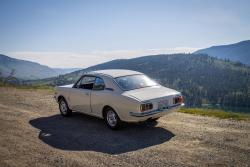 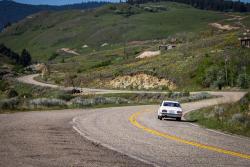 1972 Honda 1300 Coupe 7. Click image to enlarge |
Review and photos by Brendan McAleer
Mr. Ferrari. Mr. Lamborghini. Mr. Ford. Mr. Porsche. Mr. Honda. If the modern automobile industry is now a mass of corporate Powerpoint presentations promising a 15.3-percent increase in dynamism, it once was a battleground between kings.
A feud between the first two gents started one of the best-loved supercar companies on the planet. Mr. Ford mobilized the world and had a large hand in creating the middle class. Mr. Honda? Well, that’s the story of one man’s dream.
And here it is, basking in the already warming air of an Okanagan sunrise. This little coupe might be a bit obscure, but it’s the last car Soichiro Honda ever touched personally – it is, in effect, the last true Honda.
However, just before we delve into the glorious weirdness of a front-wheel-drive air-cooled machine with no sideview mirrors, a word or two on the great man himself. Unlike Toyota or Nissan, the Honda motor company wasn’t a corporation struggling to evolve from a remanufacturer of slightly horrible British saloon-cars, but rather the brainchild of a guy who had a bit of a temper. Forget everything you once thought about the buttoned-down Japanese businessman: Soichiro Honda was a certifiable nut.
Born to a blacksmith father and a weaver mother in the shadow of Mount Fuji, Honda’s first forays into engineering included inventing a stamp to forge his parents’ signatures on poor report cards. When he left school, at the age of fifteen, he went to work at a garage in Tokyo, where he helped build racing cars. His mechanical aptitude, honed by hours working alongside his father at the forge, helped him impress his boss, and they were soon coming up with stuff like a lightweight racer powered by the engine out of a biplane. Yes, really.
This raw creativity is key to understanding what made those early Hondas so special. Where other engineers followed a clear-cut path through traditional education, Soichiro simply went out and built stuff. He worked as a racing mechanic, did a little driving himself, and eventually suffered both a devastating crash and a humiliating rejection of his work.
This work, an obsessive effort to come up with a new type of piston ring, forced Honda to re-evaluate and pushed him back to school. He blazed through the coursework with a burn-the-candles-at-both-ends attitude, and was soon back in business. Then came the war and the US Air Force’s Superfortresses bombed his factory into the ground.
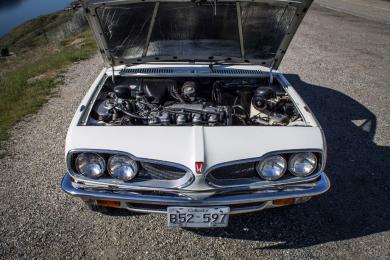 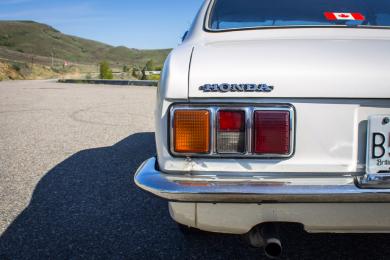 1972 Honda 1300 Coupe 7 engine bay & taillight. Click image to enlarge |
At this point, an ordinary person would have retired, perhaps setting up a small bicycle repair shop, and opting for a quiet life. Mr. Honda converted war-surplus military-spec generators originally intended for field radios to run on pressed fir oil and attached them to bikes, creating flatulent little mopeds that helped Japan get back on wheels again. A little while after that he invented Honda’s first motorcycle, and then its first proper passenger car.
This is that car. Preceded by tiny, chain-driven microcars, the Honda 1300 was the first real Honda car. In a way, it would also be the last.
Rare enough that you’ve likely never heard of it, this machine was only ever sold in Japan and a few overseas markets, most notably Australia. It had quite a following there, and that’s where this car’s current owner found it – sitting on stage at the Melbourne Auto Show.
In the early 1970s, Lindsay Thachuk was a teacher in the South of Australia, and he was fed up with his Austin Mini. While the diminutive little machine was a delight in the corners, first you had to get to the corners, and that wasn’t always so easy in a machine built to “that’ll-do” British quality control. It broke. A lot.
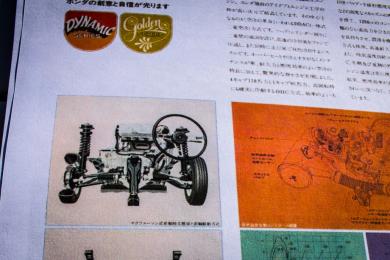 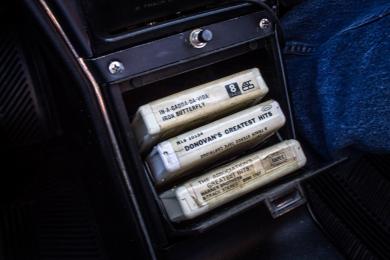 1972 Honda 1300 Coupe 7 design & 8-track storage. Click image to enlarge |
While it was in the shop for a particularly egregious failure, Thachuk went shopping and ended up with his Honda. He originally wanted a grey one but ended up with the white car after a delivery issue – luckily, as it turns out, as the merciless Australian sun was hellish on early clearcoats in any shade darker than white.
Looking at the nose of this car, I hardly need pass on that Soichiro owned a Pontiac Firebird and could be seen driving it all over Japan. The sweeping lines of the Honda look a bit like a contemporary Datsun, but the nose is pure Detroit beak. Apart from the bright red Honda badge, of course.
It wasn’t the fast one. Honda made two versions of this car, with the Coupe 9 coming with a quad-carbureted engine cranking out 113 hp. Not much by modern standards, but we’re talking about 1300cc of displacement and forty years ago. The single-carb version made a still-healthy 96 hp, and the car weighed next to nothing.











